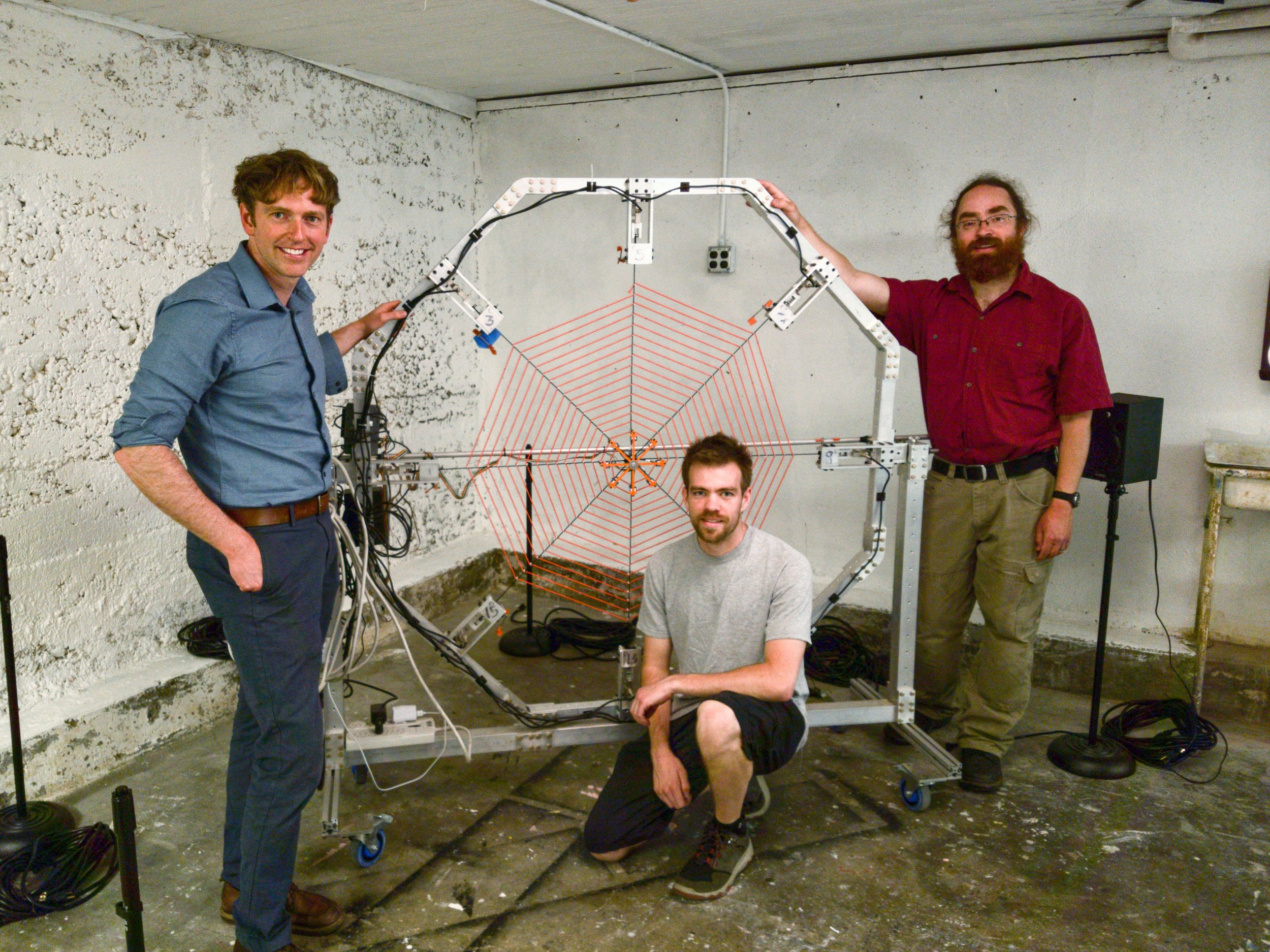
How it works
Web Construction
The web of the SpiderHarp is constructed using two different materials to mimic the different types of silk used by spiders during web construction. We selected a stiff, nylon parachute cord for the radial lines of the artificial web and an elastic shock cord for the capture spiral. The web geometry consists of eight radial members distributed symmetrically around the center of the web and an evenly spaced, Archimidean capture spiral. At the radial-spiral junctions, cable ties are used to clamp the strings together, and these joints are reinforced with cyanoacrylate glue. The web is built slack (untensioned) in a conical shape and then tensioned flat to desired levels. The angle of the untensioned cone is used to control the tension distribution in the web.
Spider Construction
At the center of the web is a 3D printed plastic sensor body that serves as the SpiderHarp’s spider. The “legs” of the spider are long, slender beams that act like springs. Accelerometers are mounted at the end of each leg to record the vibrations arriving at the feet of the spider sensor.
Spidar, Translating sound into space
We leverage techniques from signal processing to analyze the data recorded from the accelerometers mounted on the spider in order to determine the location of vibration sources in the web. Treating the web plane as a polar coordinate system with the center of the web as the origin, angular pluck locations are obtained via symmetry in the vibration patterns observed by the spider’s accelerometers, while the range to pluck locations is obtained via a peak detection procedure in the frequency domain.
Music Software, Translating Spatial vibrations back into sound
Data from SPIDAR is broadcasted over a WiFi local area network to a computer running a program called MaxMSP. Max translates SPIDAR data: vibration activity, pluck onsets, coordinates, and intensity into sonic objects and musical tones. A series of buttons mounted on the web’s frame enables a performer to toggle musical modes on and off to sonify the data in different ways - kind of like an organist pulling stops on an organ to change the sound quality by directing air through different pipes.
Octophonic sound spatialization
We use 8 speakers positioned to correspond to each of the 8 quadrants of the web. This enables us to translate the location of physical activity on the web into the physical position of sound in the room.


